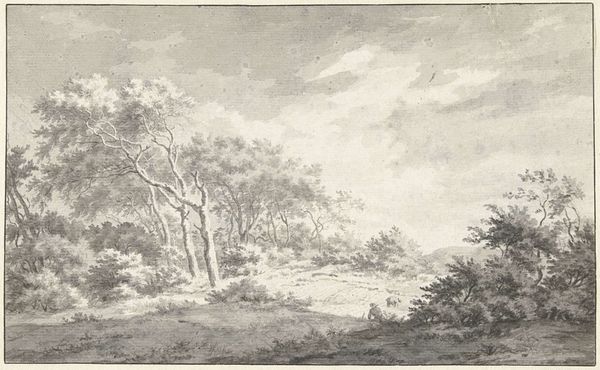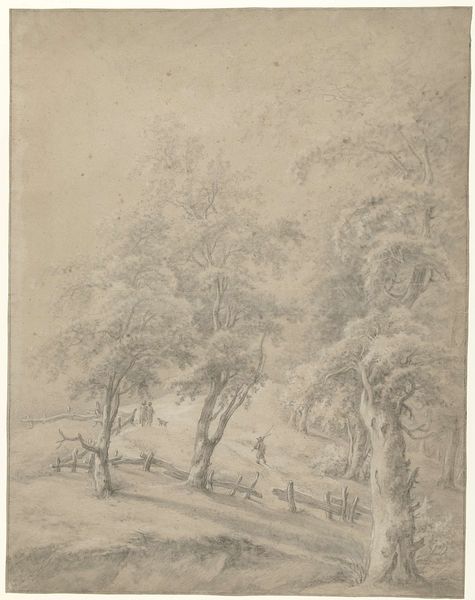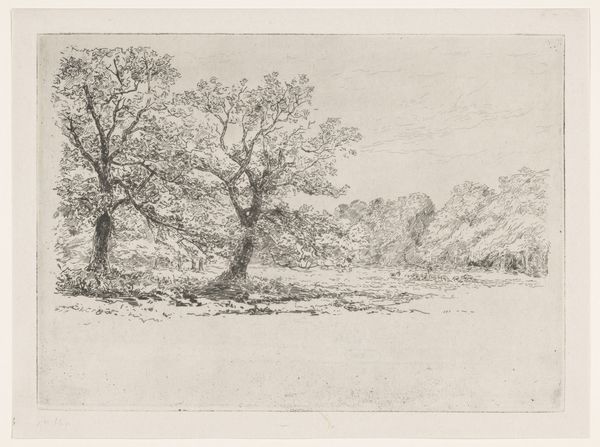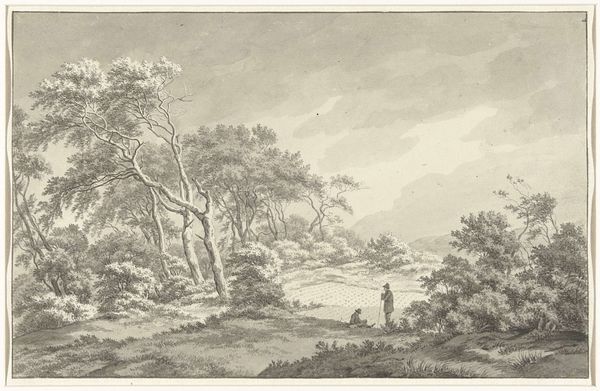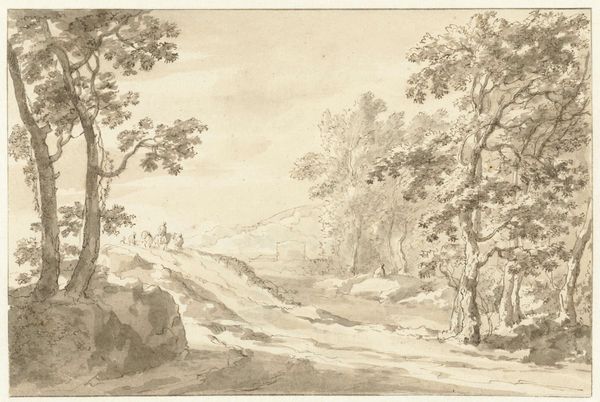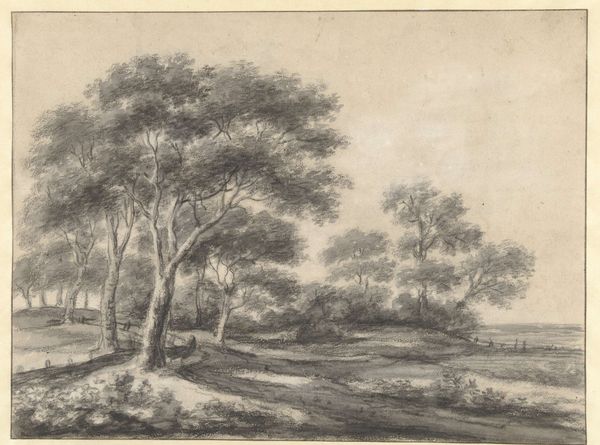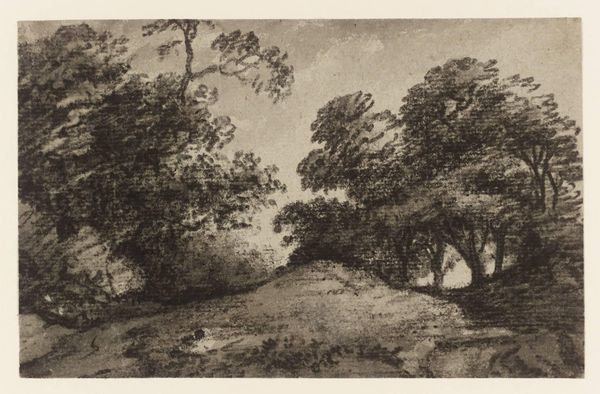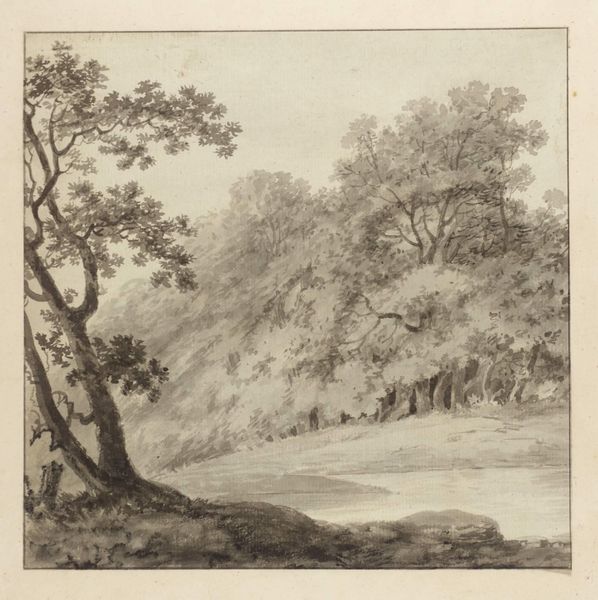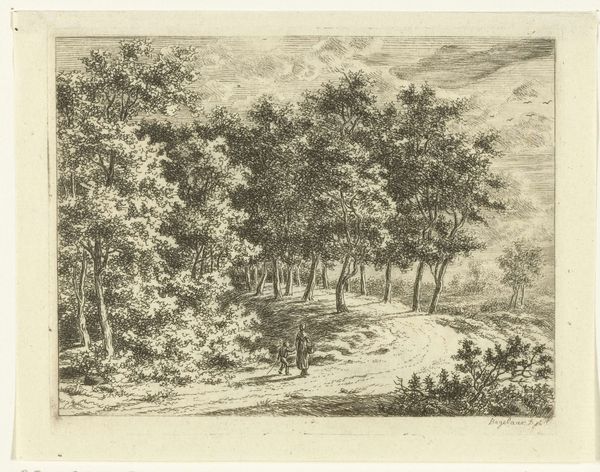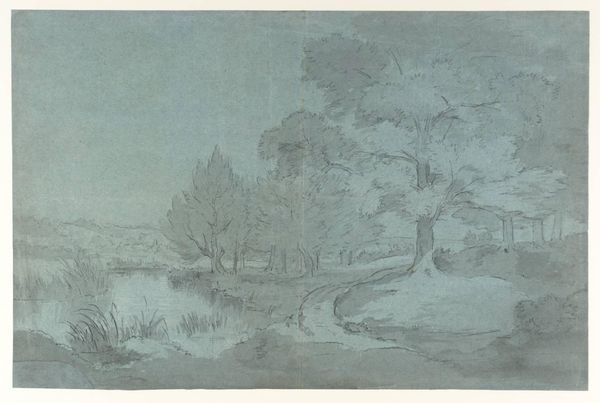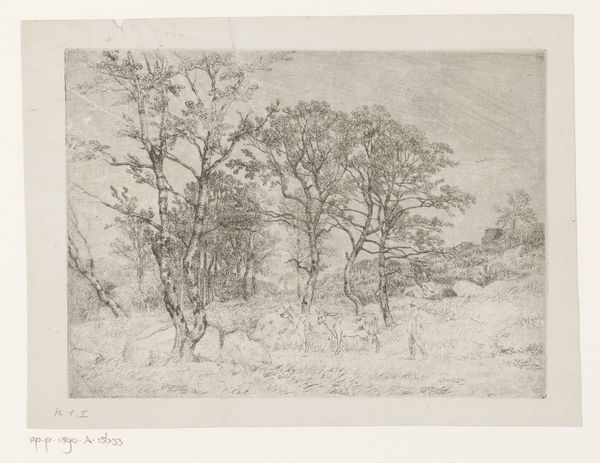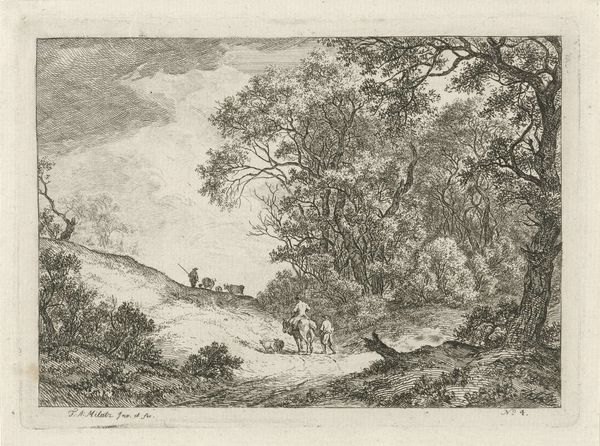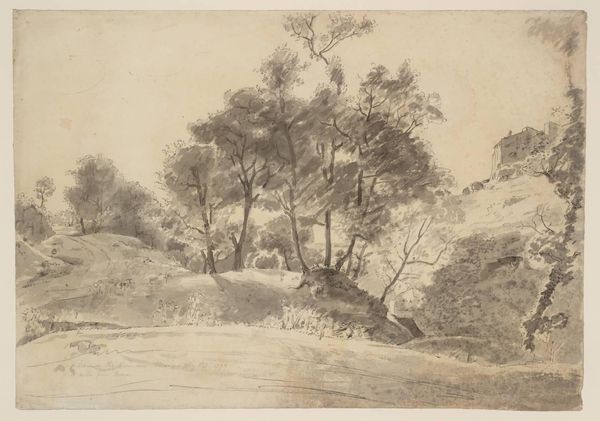
drawing, pencil
#
drawing
#
landscape
#
romanticism
#
pencil
#
realism
Dimensions: height 182 mm, width 271 mm
Copyright: Rijks Museum: Open Domain
Curator: Before us hangs "Dune Landscape in Gloomy Weather," a pencil drawing created in 1845 by Willem Roelofs, now residing here at the Rijksmuseum. Editor: "Gloomy" is the operative word here. It evokes a deep melancholia. The greyscale palette really drives home this feeling of…isolation. Curator: Indeed. Roelofs' strategic use of line and value certainly sculpts the mood. Notice the intricate hatching creating varied textures: the soft, sandy dunes versus the more defined, wind-battered trees. Editor: It reminds me of 19th-century debates surrounding land usage, privatization, and ownership during the advent of modern capitalism. Who owns these melancholic dunes? Who profits, and at what cost to the environment and the human spirit? The emptiness is potent. Curator: I'd say the emptiness also highlights formal elements. Consider how Roelofs uses the winding path to guide the eye, dividing the composition and creating depth through recessive, muted forms. The aerial perspective is subtle but quite effective. Editor: But consider also who is permitted – historically and in the present – to wander freely in such a landscape? Access to nature has always been differentially distributed across lines of class, race, and gender. Are these dunes a space of refuge or exclusion? The flock of birds suggests an exodus perhaps. Curator: You're steering us toward sociopolitical spheres, but what of the simple elegance of the composition itself? The limited value range and tightly controlled pencil strokes achieve an almost photographic realism, though the artist clearly made choices to simplify or elide detail in favor of evoking a general impression. Editor: Perhaps the "impression" Roelofs evokes is inseparable from the realities of his time? An emergent, land-hungry bourgeoisie appropriating the commons and transforming the very nature of labor. To appreciate this artwork formally, it also feels incumbent on us to grapple with such historical context. Curator: Well, I believe that our divergent readings illustrate art's fascinating potential to ignite diverse conversations, revealing the many facets held within even a simple pencil drawing. Editor: Absolutely. The visual vocabulary of art can speak volumes about both beauty and social experience when we open ourselves to interpreting it expansively.
Comments
No comments
Be the first to comment and join the conversation on the ultimate creative platform.
